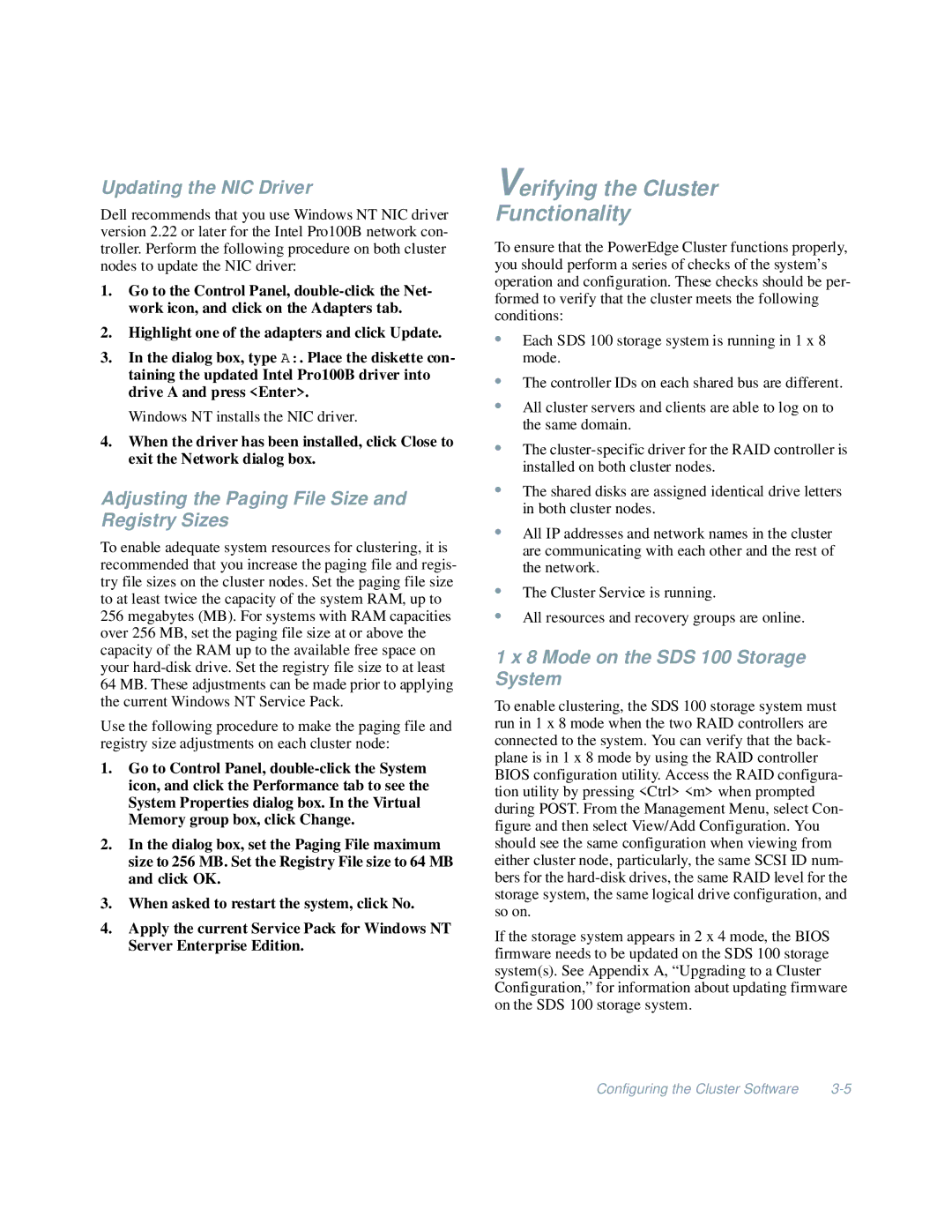Updating the NIC Driver
Dell recommends that you use Windows NT NIC driver version 2.22 or later for the Intel Pro100B network con- troller. Perform the following procedure on both cluster nodes to update the NIC driver:
1.Go to the Control Panel,
2.Highlight one of the adapters and click Update.
3.In the dialog box, type A:. Place the diskette con- taining the updated Intel Pro100B driver into drive A and press <Enter>.
Windows NT installs the NIC driver.
4.When the driver has been installed, click Close to exit the Network dialog box.
Adjusting the Paging File Size and Registry Sizes
To enable adequate system resources for clustering, it is recommended that you increase the paging file and regis- try file sizes on the cluster nodes. Set the paging file size to at least twice the capacity of the system RAM, up to 256 megabytes (MB). For systems with RAM capacities over 256 MB, set the paging file size at or above the capacity of the RAM up to the available free space on your
Use the following procedure to make the paging file and registry size adjustments on each cluster node:
1.Go to Control Panel,
2.In the dialog box, set the Paging File maximum size to 256 MB. Set the Registry File size to 64 MB and click OK.
3.When asked to restart the system, click No.
4.Apply the current Service Pack for Windows NT Server Enterprise Edition.
Verifying the Cluster
Functionality
To ensure that the PowerEdge Cluster functions properly, you should perform a series of checks of the system’s operation and configuration. These checks should be per- formed to verify that the cluster meets the following conditions:
•Each SDS 100 storage system is running in 1 x 8 mode.
•The controller IDs on each shared bus are different.
•All cluster servers and clients are able to log on to the same domain.
•The
•The shared disks are assigned identical drive letters in both cluster nodes.
•All IP addresses and network names in the cluster are communicating with each other and the rest of the network.
•The Cluster Service is running.
•All resources and recovery groups are online.
1 x 8 Mode on the SDS 100 Storage System
To enable clustering, the SDS 100 storage system must run in 1 x 8 mode when the two RAID controllers are connected to the system. You can verify that the back- plane is in 1 x 8 mode by using the RAID controller BIOS configuration utility. Access the RAID configura- tion utility by pressing <Ctrl> <m> when prompted during POST. From the Management Menu, select Con- figure and then select View/Add Configuration. You should see the same configuration when viewing from either cluster node, particularly, the same SCSI ID num- bers for the
If the storage system appears in 2 x 4 mode, the BIOS firmware needs to be updated on the SDS 100 storage system(s). See Appendix A, “Upgrading to a Cluster Configuration,” for information about updating firmware on the SDS 100 storage system.
Configuring the Cluster Software |
